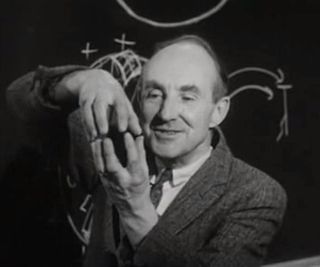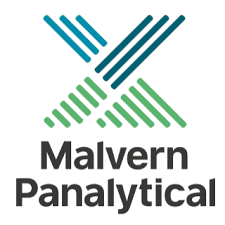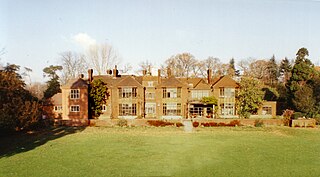The General Electric Company (GEC) was a major British industrial conglomerate involved in consumer and defence electronics, communications, and engineering. The company was founded in 1886, was Britain's largest private employer with over 250,000 employees in the 1980s, and at its peak in the 1990s, made profits of over £1 billion a year.

A laboratory is a facility that provides controlled conditions in which scientific or technological research, experiments, and measurement may be performed. Laboratories are found in a variety of settings such as schools, universities, privately owned research institutions, corporate research and testing facilities, government regulatory and forensic investigation centers, physicians' offices, clinics, hospitals, regional and national referral centers, and even occasionally personal residences.

Carl Paul Gottfried von Linde was a German scientist, engineer, and businessman. He discovered a refrigeration cycle and invented the first industrial-scale air separation and gas liquefaction processes, which led to the first reliable and efficient compressed-ammonia refrigerator in 1876. These breakthroughs laid the backbone for the 1913 Nobel Prize in Physics that was awarded to Heike Kamerlingh Onnes. Linde was a member of scientific and engineering associations, including being on the board of trustees of the Physikalisch-Technische Reichsanstalt and the Bavarian Academy of Sciences and Humanities. Linde was also the founder of what is now known as Linde plc but formerly known (variously) as the Linde division of Union Carbide, Linde, Linde Air Products, Praxair, and others. Linde is the world's largest producer of industrial gases and ushered in the creation of the global supply chain for industrial gases. He was knighted in 1897 as Ritter von Linde.

Siebe Gorman & Company Ltd was a British company that developed diving equipment and breathing equipment and worked on commercial diving and marine salvage projects. The company advertised itself as 'Submarine Engineers'. It was founded by Augustus Siebe, a German-born British engineer chiefly known for his contributions to diving equipment.
Submarine Products Ltd (1959−1990) was a diving gear manufacturer, with a factory in Hexham in Northumberland, England. It was founded in 1959 by Lieutenant-Commander Hugh Oswell.

A hazmat suit is a piece of personal protective equipment that consists of an impermeable whole-body garment worn as protection against hazardous materials. Such suits are often combined with self-contained breathing apparatus (SCBA) to ensure a supply of breathable air. Hazmat suits are used by firefighters, emergency medical technicians, paramedics, researchers, personnel responding to toxic spills, specialists cleaning up contaminated facilities, and workers in toxic environments.
Fisher Scientific International, Inc. was a laboratory supply and biotechnology company that provided products and services to the global scientific research and clinical laboratory markets until its merger with Thermo Electron in 2006, after which it became Thermo Fisher Scientific. The company offered products and services to over 350,000 customers located in approximately 150 countries including pharmaceutical and biotechnology companies, secondary and higher education institutions, hospitals and medical research institutions, and quality control, process control and research and development laboratories.

VWR International is an American company involved in the distribution of research laboratory products, with over 1,200,000 items to more than 250,000 customers in North America and Europe. The U.S. division is headquartered in Radnor, Pennsylvania. VWR ranked #91 in 2006, and #77 in 2005, in Forbes list of largest American private companies. Suppliers include Applied Scientific, 3B Scientific Duracell, Kimberly-Clark, Bel-Art Products, and Welch Allyn. VWR primarily serves the government, biotechnology, life science, education, electronics and pharmaceutical sectors. In 2010, the company maintained operations in 25 countries and processed approximately 50,000 order lines daily from a logistical network, which includes 25 strategically located distribution centers.
Materials MASINT is one of the six major disciplines generally accepted to make up the field of Measurement and Signature Intelligence (MASINT), with due regard that the MASINT subdisciplines may overlap, and MASINT, in turn, is complementary to more traditional intelligence collection and analysis disciplines such as SIGINT and IMINT. MASINT encompasses intelligence gathering activities that bring together disparate elements that do not fit within the definitions of Signals Intelligence (SIGINT), Imagery Intelligence (IMINT), or Human Intelligence (HUMINT).

Eric M. Rogers was a British writer and physics educator. He wrote the 1960 textbook Physics for the Inquiring Mind. The book, subtitled The Methods, Nature, and Philosophy of Physical Science, was based on courses he gave at Princeton University, where he taught from 1942 to 1971. Rogers also headed the Nuffield Science Teaching Project programme in physics education in the 1960s.

Hans Baruch was an American physiologist/inventor, noted mainly for his contributions to scientific apparatus and instruments in the field of automated clinical chemistry. His Robot Chemist "was the first commercially available discrete analyzer, and probably the first to produce results with a digital print-out."
The Birthday Honours 1990 for the Commonwealth realms were announced on 15 June 1990, to celebrate the Queen's Birthday of 1990.
The Physical Science Study Committee, usually abbreviated as PSSC, was inaugurated at a 1956 conference at MIT to review introductory physics education and to design, implement, and monitor improvements. It produced major new physics textbooks, instructional movies, and classroom laboratory materials, which were used by high schools around the world during the 1960s and 1970s and beyond.

Malvern Panalytical is a Spectris plc company. The company is a manufacturer and supplier of laboratory analytical instruments. It has been influential in the development of the Malvern Correlator, and it remains notable for its work in the advancement of particle sizing technology. The company produces technology for materials analysis and principal instruments designed to measure the size, shape and charge of particles. Additional areas of development include equipment for rheology measurements, chemical imaging and chromatography. In 2017, they merged with PANalytical to form Malvern Panalytical Ltd.
The Queen's Award for Enterprise: International Trade (Export) (2007) was awarded on 21 April 2007, by Queen Elizabeth II.
The Queen's Award for Enterprise: International Trade (Export) (2002) was awarded on 21 April 2002, by Queen Elizabeth II.
The New Year Honours 1987 were appointments by most of the Commonwealth realms of Queen Elizabeth II to various orders and honours to reward and highlight good works by citizens of those countries, and honorary ones to citizens of other countries. They were announced on 31 December 1986 to celebrate the year passed and mark the beginning of 1987 in the United Kingdom, Australia, New Zealand, Barbados, Mauritius, Fiji, Grenada, Papua New Guinea, Tuvalu, St Lucia, St Vincent & The Grenadines, Belize, Antigua & Barbuda, and St Christopher & Nevis.
The Nuffield Science Teaching Project was a programme to develop a better approach to teaching science in British secondary schools, under the auspices of the Nuffield Foundation. Although not intended as a curriculum, it gave rise to alternative national examinations, and its use of discovery learning was influential in the 1960s and 1970s.

Fulmer Research Institute was founded in 1945 as a UK contract research and development organization specializing in materials technology and related areas of physics and chemistry. It was modelled on American contract research companies such as Battelle Memorial Institute and The Mellon Institute of Industrial Research. In 1965 it was acquired by The Institute of Physics and the Physical Society, a rare case of a contract research company being owned by a Learned Society. Through the 1970s and 80s Fulmer evolved. Its services in testing, consultancy and certification were greatly strengthened while academic research declined. It continued to make important developments and innovations for industry and government until in 1990 it was split up and sold to other R & D and testing organizations.










